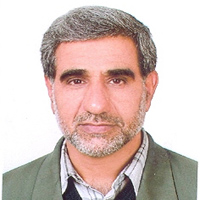Challenges and Limitations of Soil and Land Resources in Iran
Author(s):
Article Type:
Research/Original Article (دارای رتبه معتبر)
Abstract:
Iran, is located in the arid and semi-arid regions of the world, so due to geological and topographic conditions, has various and extensive limitations in soil resources and lands. These restrictions, along with unprincipled and intensive exploitation over the past few decades, have posed many challenges to these resources and thus endangered food security and public health. In this article, while briefly stating the importance and functions of soil, the current situation, and the most important challenges and limitations of soil resources in the country are explained. According to available information and data, soil water and wind erosion is the most important cause of soil degradation in Iran, which has many economic, social and environmental consequences. The lowest soil erosion estimated in the country is much higher than its tolerable (average amount of soil formation). The most important cause of soil degradation in agricultural lands, especially irrigated farms, is soil salinity. At least 50% of the country's irrigated lands are facing an increasing problem of salinity. Land use change can be considered as the most important and urgent challenge of the soil resources, especially fertile lands, which also has negative economic, social, cultural and security consequences. Lack of organic carbon and loss of soil fertility, especially agricultural lands, are important limitations of soil quality that severely threaten food security and health. The degradation of soil resources has not only affected its productive function, but has also drastically reduced the capacity of lands and territories to cope with climate change, drought and floods. Occurrence of floods with a frequency greater than the return period of rainfall events, as well as hydrological and agricultural droughts, more severe than climatic droughts, are signs of this degradation.
Keywords:
Language:
Persian
Published:
Journal of Land Management, Volume:10 Issue: 1, 2022
Pages:
111 to 134
https://magiran.com/p2512098
مقالات دیگری از این نویسنده (گان)
-
The effect of soil salinity on nitrogen mineralization in the presence and absence of wheat straw in three soils with different textural classes
Younes Shukuhifar, Ahmad Mohammadi Ghehsareh *, Karim Shahbazi, Mohammad Mehdi Tehrani, Hosein Besharati
Iranian Journal of Soil and Water Research, -
Optimization of gamma polyglutamic acid (γ-PGA) production by Bacillus velezensis and its effect on increasing wheat growth and biocontrol of Bipolaris sorokiniana causal agent of common root rot of wheat
Mohsen Sasani, Masoud Ahmadzade *, Hossein Besharati, Amir Mirzadi Gohari
, -
Evaluation of soil organic matter dynamics under crop residue management using carbon-13 isotope
M. Mirzaei, M. Gorji Anari, E. Moghiseh *, H. Asadi
Journal of Nuclear Science and Tehnology, -
Sustainable soil management and its role in mitigating greenhouse emissions
Morad Mirzai, *, Ebrahim Moghiseh, Hossein Asadi, Ehsan Razavi Toosi
Journal of Land Management,



